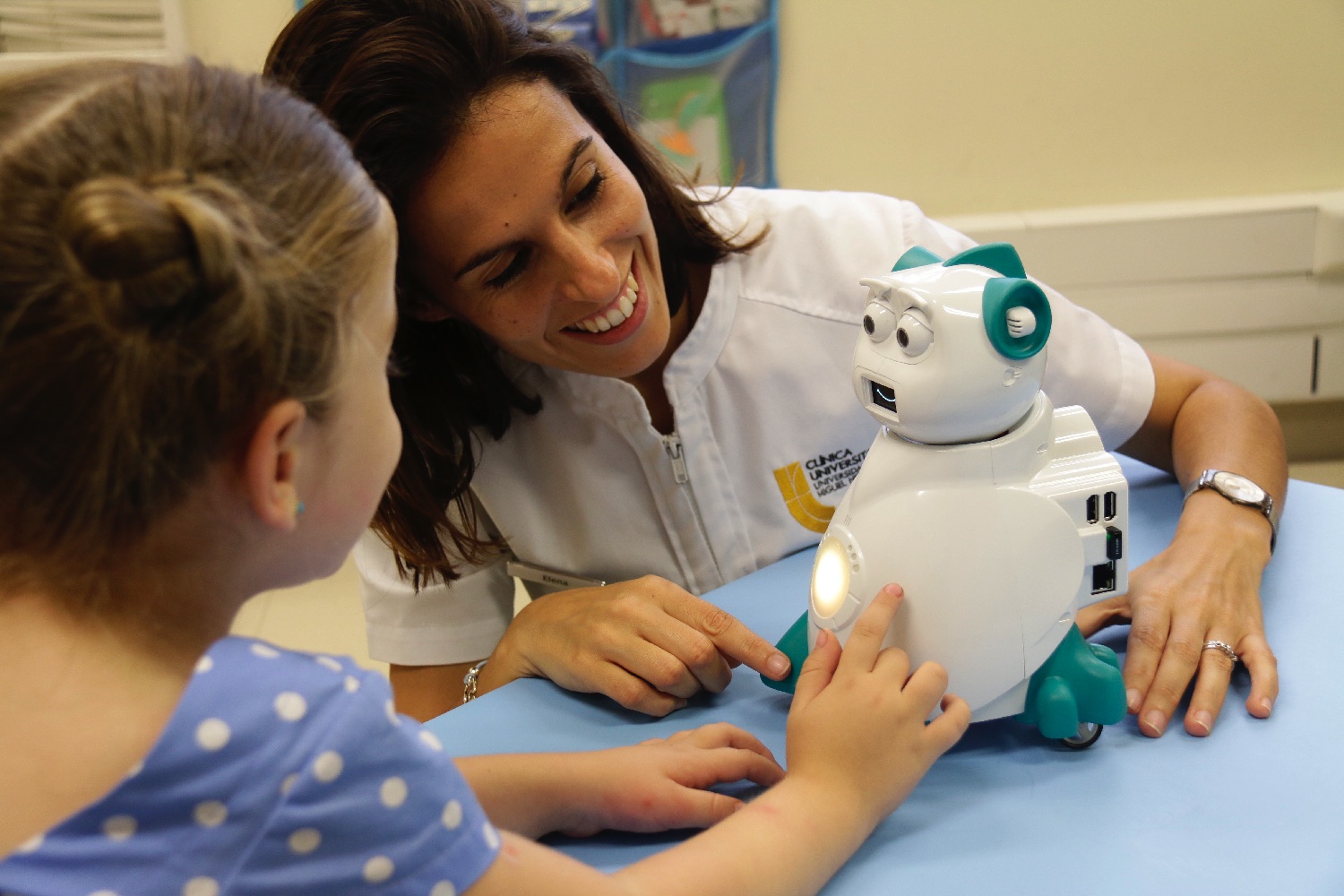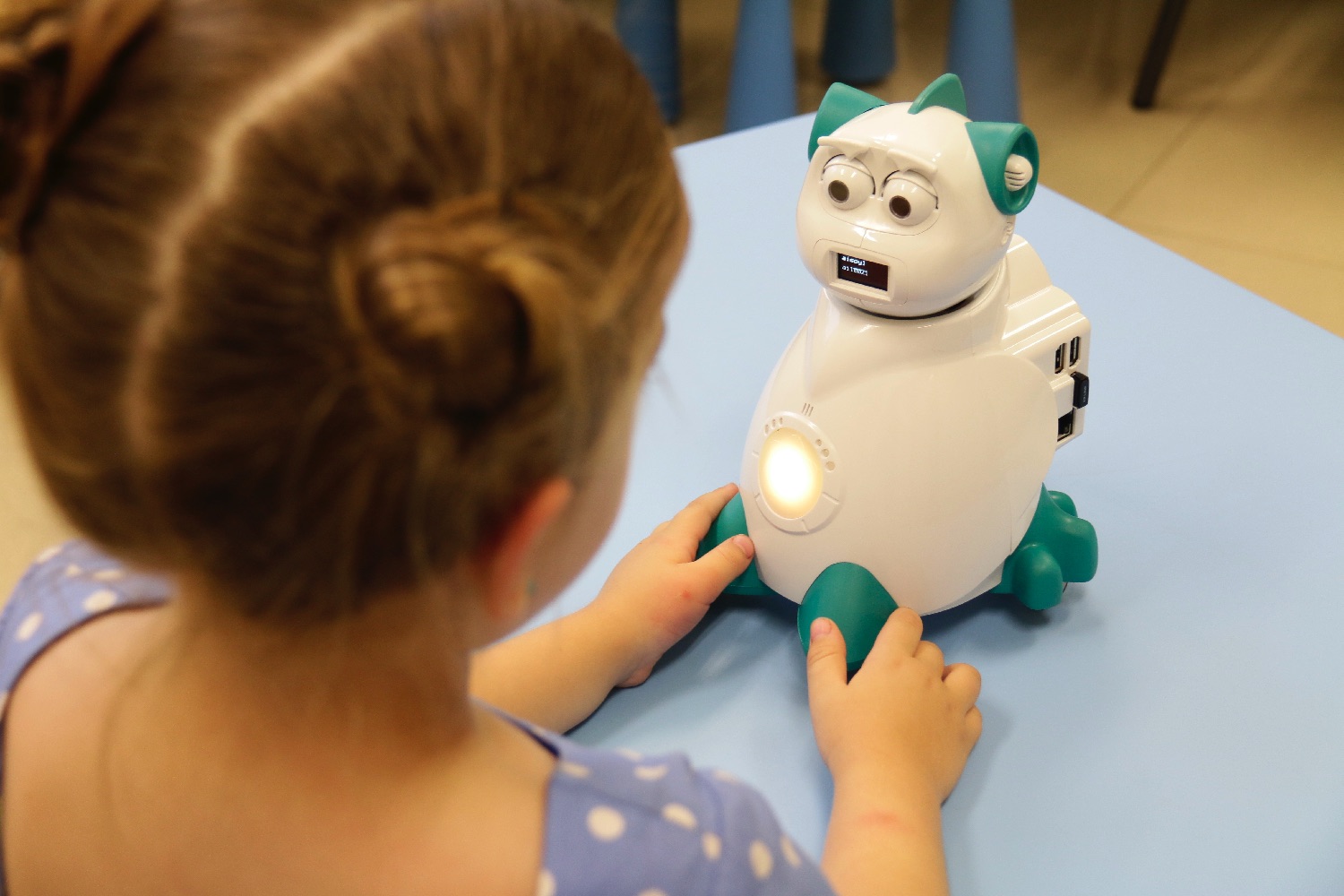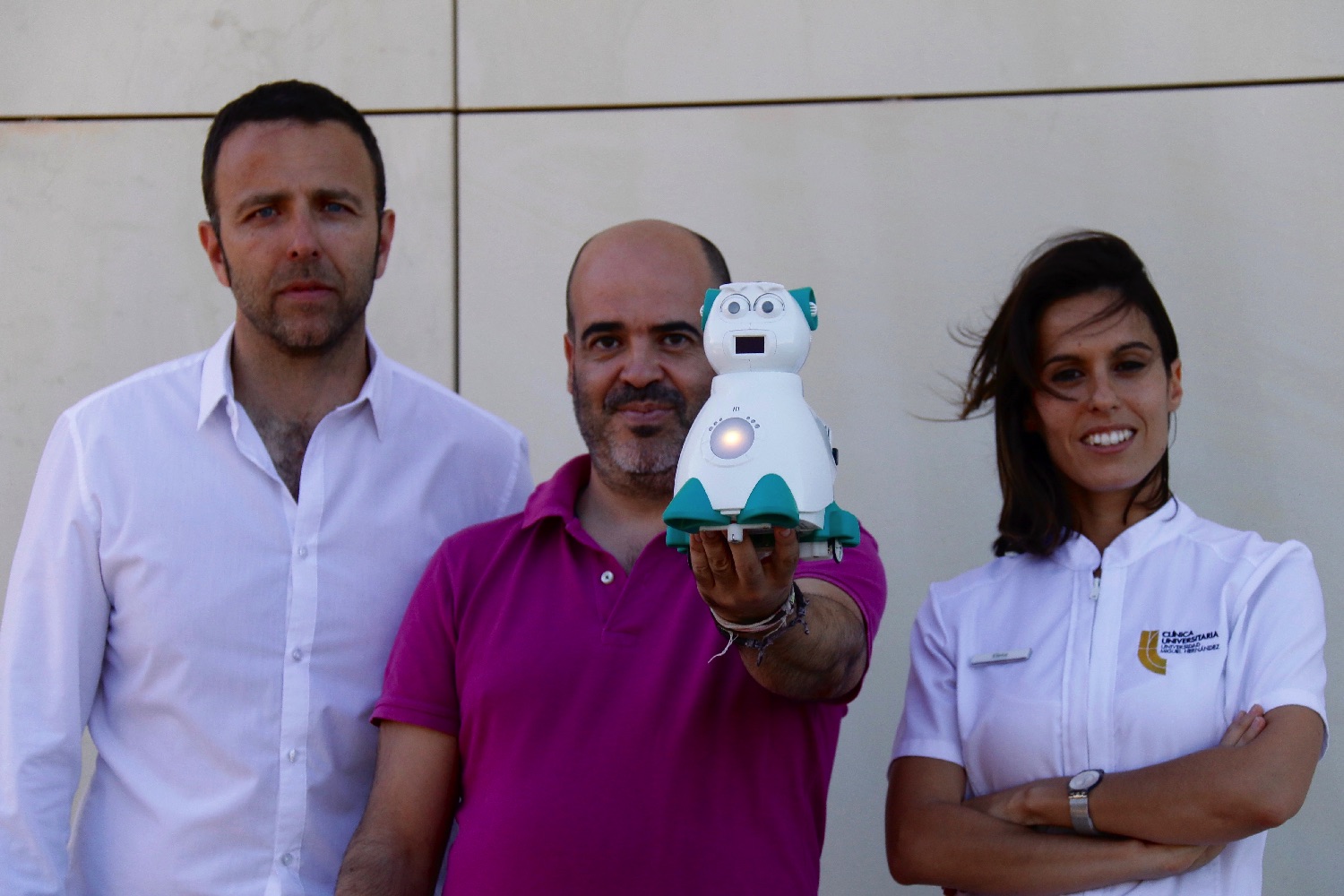Researchers at Spain’s Universidad Miguel Hernández and the Spanish Aisoy Robotics company are collaborating to investigate how the latter group’s pint-size educational Aisoy robot can enhance the effectiveness of therapy sessions at the UMH University Clinic — particularly related to developing children’s emotional, social, and cognitive skills.
As an example, the robot will express emotions a child can then identify, or suggest playing certain games. Over the course of their time together, the idea is that kids will build up emotional attachments with the robot, and the interaction will aid with therapeutic adherence.
“We already have an Emotional OS, called Airos, which includes an emotional engine, a cognitive engine, and a decision engine,” José Manuel del Río, Aisoy’s CEO, told Digital Trends. “It has an application level for building user apps, we call Bot-apps. Clinica Universitaria UMH and Aisoy [are working] together for designing and building Bot-apps which use Airos’ capabilities [as well as the] Aisoy1 robot, adapted to children with autism.”
Manuel del Río continued that the researchers have not yet carried out in-depth studies suggesting why robots — and the Aisoy robot in particular — are so well suited to this task, but his anecdotal experience suggests it has something to do with the “expressivity of the face” of the robot, which makes it easy for children to “understand and communicate with.”
Going forward, the goal is that the robot could also expand to help with other childhood problems, such as attention deficit disorder (ADD), hyperactivity and impulsivity symptoms.
“We are going to finish the development phase [of our current work] in a couple of weeks,” he said. “Then we are going to [start work on a] study applying that therapy [to] 50 children, [ranging between] 8 to 10 years old. If results are positive, we will deliver those programs to interested parents for [use in] their homes.”
The company hopes that a tested version of the autism software for the Aisoy robot will be available from January.
Editors' Recommendations
- So THAT’S why Boston Dynamics retired its Atlas robot
- SWAT team’s Spot robot shot multiple times during standoff
- Tesla’s Optimus humanoid robot can now dance like Elon Musk
- Amazon’s new humanoid robot will not take human jobs, company insists
- Bear-repelling ‘Monster Wolf’ robot gets wider deployment







